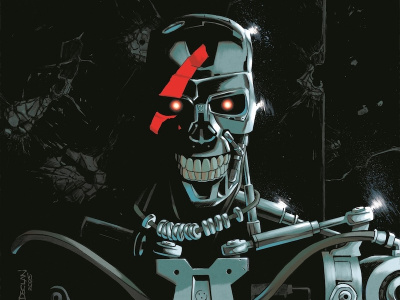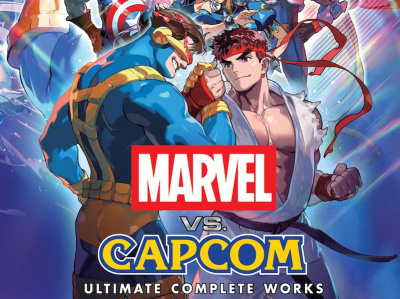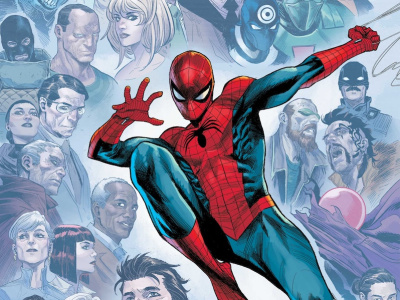Neil Gaiman and Todd McFarlane battled in court today, in a dispute that McFarlane's attorney called in his opening statement a case about 'two realities, Neil's reality and Todd's reality.' Both creators testified on their own behalf, and the emotions that came to the surface during key moments of that testimony illustrated the issues that led them into court for a case that is probably costing them more than the money at stake.
Gaiman, the writer, told his story eloquently, as you would expect from someone that makes his living telling stories. Although appearing slightly nervous at first, his voice cracking a little, he smoothed out his answers and appeared cool and collected as he described the inspiration for the story in Spawn #9 in which the new characters in dispute were created. But under cross-examination by Image's attorney, he became agitated and visibly angry when describing how he saw for the first time, at a convention in Texas earlier this year (after the suit was filed), a new Angela trade paperback collection with a prominent biography of him on the back cover. And it wasn't just that this was a reprint for which he hadn't seen any royalties; it was that this book, his work, was being sold using his fame and biography without his control or permission.
Like Gaiman, McFarlane also told a story of creation during his testimony. He described how he had created Spawn in high school, and then began publishing it through Image after leaving Marvel in August of 1991. It was the Medieval Spawn character that hit his hot button. When he first understood that Gaiman was claiming some ownership of the character, he clearly felt that he was at risk of losing control of his most personal character. As he put it, if Gaiman owned a piece of Medieval Spawn, then '...there's a piece of this world [Spawn] for as long as I live that I don't have.'
When his attorney asked McFarlane what he had wanted the written agreement he was negotiating with Gaiman to look like, he lifted the three-inch binder of exhibits and said vehemently, 'I was hoping it would be this thick so there would never be questions again.' And when he was asked why he was willing to give Gaiman consideration for Medieval Spawn, a character that he considered derivative of his own work, he said, 'Just to finish it!' McFarlane was so upset after that answer that it appeared that he might break down, but he was able to compose himself after taking a drink of water and remaining silent for a time. It was obvious that he has great love for his most important creation, and that it was the prospect of losing control of even a small piece of it that was most upsetting to him.
On Wednesday testimony in the first part of the trial, to determine whether or not there's any liability due from McFarlane to Gaiman, will be concluded. The jury is then to reach a decision on only that question. If they determine that there is a liability, the second part of the trial, to determine damages, will then pick up on Thursday. Judge Shabaz has promised that this trial will be over by the end of the day on Friday. It will be.
For full coverage of the trial, see the rest of our articles, most written after this one:
The damages phase and post-mortem--
'Gaiman Keeps Share of Spawn Characters'
The verdict --
'Gaiman Sweep!'
McFarlane's cross-examination, closing arguments, and the case goes to the jury --
'Jury's Out on Gaiman vs. McFarlane.'
The first day ran long, so we broke our coverage into two parts:







